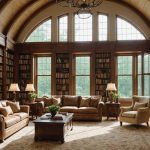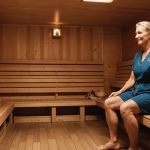Understanding Your Podcasting Needs
Identifying your podcasting needs is vital for setting up an efficient workspace. Distinguishing between podcasting and other uses will guide your equipment choices. If your primary use is podcasting, your space should focus on audio quality and comfort. Evaluate whether your purpose includes interviews, storytelling, or casual conversations. Each format may require different podcasting workspace essentials.
Next, assess the essential equipment based on your specified uses. A quality microphone is crucial, as it directly influences sound clarity. Consider dynamic vs. condenser microphones, depending on your environment’s acoustics. Headphones are another key element; they ensure precise audio monitoring and editing. A podcast needs suitable podcasting workspace essentials that might also include a pop filter, audio interface, and recording software. These items collectively enable a professional sound output.
Also read : Revolutionize your garage: the definitive blueprint for crafting an outstanding home gym
Finally, create an inspiring and motivating workspace. An attractive, well-organised environment can boost creativity and productivity. Consider the lighting and ergonomic seating; comfort directly affects long recording sessions. Decorate with positive, motivating elements that align with your podcast’s theme. By understanding and implementing these podcasting workspace essentials, you lay a strong foundation for future success. Creating the perfect setting for your creative journey is not merely about equipment; it is about the overall atmosphere you foster.
Key Elements of a Functional Home Office
A well-crafted home office design plays a critical role in how effectively you can work, ensuring you stay productive and comfortable throughout the day.
Also read : Elevate your living: innovative tips for optimizing vertical space in multi-story townhouses
Optimal Layout for Podcasting
When considering an optimal layout for podcasting within a home office, it is essential to account for sound quality and accessibility. A dedicated corner with soundproofing materials can substantially enhance audio experiences. Placing your equipment, such as microphones and mixers, within easy reach maximizes your efficiency. Adequate lighting is another key, as it impacts both video quality and your comfort.
Workstation Design Considerations
Creating an effective workstation involves more than just the physical furnishings. It encompasses an understanding of your work patterns and needs. Furniture arrangement should allow for easy access to all necessary tools, minimising distractions and promoting concentration. Consider adjustable desks that offer flexibility in your working posture, from seated to standing, accommodating different preferences throughout the day.
Importance of Ergonomics
Ergonomically designed chairs and desks are pivotal for maintaining health in a home office. The right chair supports your back, aligns your posture, and reduces strain, while a well-positioned desk ensures an efficient work flow. Prioritising ergonomics helps produce a workspace conducive to both productivity and creativity, aiding in long-term wellbeing.
Essential Equipment for Aspiring Podcasters
The journey into podcasting begins with selecting the right microphone, which is pivotal for sound quality. Dynamic microphones, such as the Shure SM58, are sturdy and ideal for noisier environments, while condenser microphones, like the Audio-Technica AT2020, capture a more detailed sound, better suited for a controlled space. Consider your recording environment when choosing your microphone type to ensure optimal sound capture.
Pair your microphone with a reliable audio interface to convert analog sound into digital format. Interfaces like the Focusrite Scarlett series deliver clear recordings by connecting microphones to a computer over USB. Select an interface that matches the number of inputs you need, ensuring you can support additional equipment or multiple hosts.
Beyond these fundamentals, aspiring podcasters should invest in quality headphones to monitor audio accurately. Closed-back models help isolate sound, allowing you to catch issues during recording. Mixers become invaluable if you’re handling multiple audio sources or wish to adjust levels live. Finally, pop filters are crucial for reducing plosive sounds, improving clarity, and protecting microphones from moisture.
Equipping yourself with the right gear enhances your podcast’s professionalism, allowing your voice to shine without technical distractions. Choose wisely based on your specific podcasting context and needs.
Soundproofing Techniques for an Ideal Recording Environment
Creating an ideal recording environment requires effective soundproofing solutions. This can be accomplished through both DIY approaches and professional assistance, each with unique advantages.
Acoustic Treatment: Why It Matters
Acoustic treatment is essential for reducing unwanted noise and enhancing sound quality. It involves using sound-absorbing materials such as foam panels or bass traps to diminish echoes and reverberation. These materials help in maintaining a clean and crisp recording, vital for any production setting.
DIY Soundproofing Tips
For those preferring a DIY approach, there are practical tips to consider. Sealing gaps around windows and doors with weatherstripping or draft stoppers can significantly minimize noise interference. Additionally, hanging heavy curtains or installing thick carpets might absorb excess sound, offering an affordable soundproofing solution that improves your recording environment without breaking the bank.
Professional Options and Considerations
Opting for professional soundproofing services provides comprehensive solutions tailored to your specific needs. Experts use advanced techniques to ensure minimal noise disruption and optimal acoustics. However, hiring professionals comes with its pros and cons. While it guarantees high-quality results, it can be costly. Balancing your budget with the need for quality soundproofing is crucial when considering this route. Choosing the right soundproofing solutions can elevate your recording space, making it a worthwhile investment.
Aesthetic Enhancements to Boost Creativity
In today’s ever-evolving work environments, home office aesthetics have become crucial for inspiring creativity. A well-designed workspace can enhance productivity and influence motivation. One impactful approach is incorporating color psychology. Colours can evoke emotions and influence mood. For instance, blue promotes calmness and focus, while green stimulates innovation and balance.
Introducing decorative elements can further enhance a creative atmosphere. Consider adding artwork, plants, or unique lighting fixtures. These elements not only uplift the space visually but also inspire imaginative thinking. Art pieces, in particular, can serve as both conversation starters and visual stimulations that spark fresh ideas.
Personalization is another powerful aspect of crafting a conducive environment for creativity. Incorporate items that reflect your personality or that have personal significance. This could be anything from family photos to trinkets collected from travels. A personalized workspace offers comfort and familiarity, making you more inclined to engage deeply with your tasks.
To summarize, the aesthetic value of a home office can significantly impact creativity. By strategically using colours, incorporating inspiring decorations, and personalizing your space, you create an environment that’s not only visually pleasing but also mentally stimulating.
Real-Life Examples of Podcasting Home Offices
Exploring podcasting workspace inspiration can significantly aid in crafting a functional and creative home office. Let us delve into how successful podcasters have designed their spaces, transforming ordinary areas into productivity powerhouses.
Profiles of Successful Podcasters’ Offices
Focusing on the unique elements of successful podcasters’ setups, such as soundproofing techniques and ergonomic furniture, can provide valuable inspiration. Tailoring these elements to suit personal style and comfort is crucial. For instance, podcaster John Doe incorporates layered soundproofing and vintage decor, creating a visually pleasing yet acoustically efficient workspace.
Before-and-After Transformations
Witnessing the remarkable before-and-after transformations of podcasting spaces can ignite creativity. Spaces once constrained by clutter can be simplified, becoming sleek and efficient setups. Sarah Smith, a podcaster focusing on storytelling, transformed her space by streamlining tech arrangements and integrating multifunctional furniture, enhancing both design and functionality.
Lessons Learned from Each Space
Drawing insights from podcasters’ lived experiences offers practical tips. Interviews suggest that maintaining adaptability in design allows for evolving workspace needs. Quotes highlight the importance of investing in quality audio equipment to ensure content quality. Visual showcases demonstrate that small yet significant decor changes can tailor a space to one’s personality.
Incorporating these ideas into your own podcasting setup can make a substantial difference in daily productivity and comfort.











